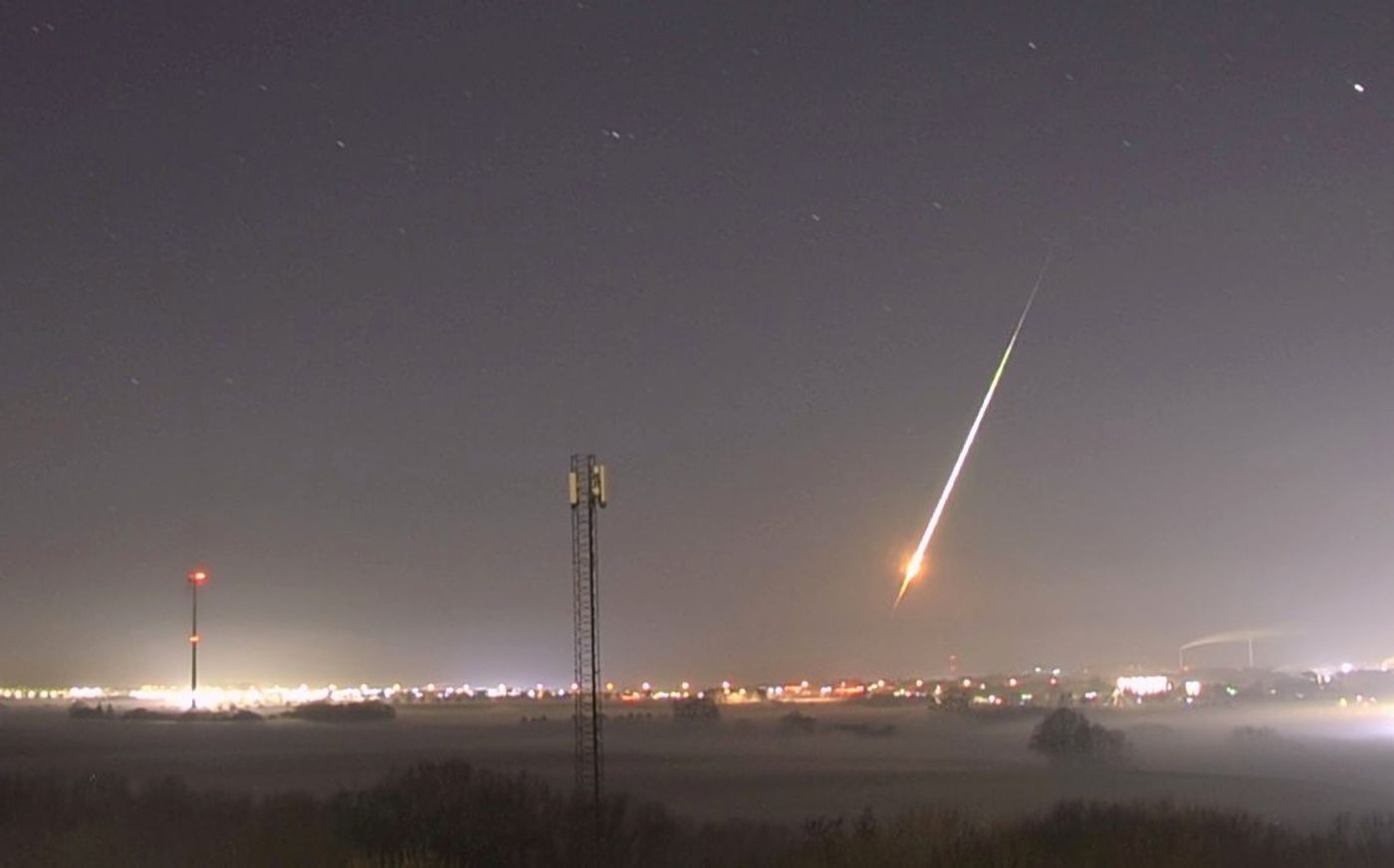Shooting Star Spotted Before Impact
This past week, a small asteroid – colloquially known as a ‘shooting star’ – was discovered in space on its way towards Earth. This is only the seventh time an asteroid has been discovered before its impact. The predicted time and location of the impact was 0:2:50 – 03:03 UTC on February 13th in the atmosphere above northern France.
Krisztián Sárneczky, a European astronomer, discovered the asteroid and made the estimate for its predicted impact. Sárneczky took observations with the 60 cm (~24 in) Schmidt telescope at the Piszkéstető Observatory in Hungary in order to make the discovery. He named the asteroid Sar2667; its official designation became 2023 CX1. This is actually the second impactor that was discovered by Sárneczky; his first discovery was of 2022 EB5, which was less than a year ago and only the fifth asteroid ever discovered before impact. There have been three predicted impacts over the last year alone, which illustrates how asteroid detection capabilities have rapidly improved over a short period of time.
Sárneczky imaged the new asteroid at 20:18:07 UTC on February 12, 2023. He then took a second observation to confirm the asteroid’s existence, and then reported it to the Minor Planet Center promptly at 20:49 UTC. Just 40 minutes later, the Višnjan Observatory in Croatia obtained follow-up observations to confirm Sárneczky’s observations.
After the confirmation, impact assessment systems around the globe calculated that the probability of asteroid’s impact with Earth’s atmosphere was 100%. Scientists estimated that the asteroid was about 1 meter (3.281 feet) in diameter and would pose no threat to people or property.
Over the next seven hours, astronomers across the globe took observations of the object as it approached Earth. This allowed scientists to estimate the asteroid’s “impact corridor” – the three-dimensional space in which the asteroid would enter Earth’s atmosphere – to be above the English Channel, traveling West to East. Astronomers continued to observe the object up until just ten minutes before its impact.
At 02:59 UTC, the asteroid entered Earth’s atmosphere, glowing bright upon its impact. Due to the precise predictions, many people were able to wait for its atmospheric entry to see and capture the beautiful ‘shooting star’ during its journey. Observations mostly came from the southern United Kingdom and France, but also from as far away as Belgium, the Netherlands, and Germany.
Scientists estimated that some fragments of the asteroid could have survived the atmospheric journey and landed on Earth somewhere near the coast north of Rouen in Normandy, France. And in fact, some fragments did survive! A fragment was found by an 18 year-old student in Seine Maritime, the exact region predicted by scientists.
This historic event would not have been possible without the team at the European Space Agency’s Planetary Defence Office. There were timely notifications from the ‘Meerkat’ warning system and a network of telescopes to observe the impactor; this network was established just for these types of occasions.
One day scientists might discover an imminent impactor that is much larger than this object. A large impactor could cause serious damage to the Earth. For this reason, NASA and the European Space Agency are developing ways to deflect asteroids. NASA’s Dart mission has recently shown that it is possible to change an asteroid’s motion in space to hopefully prevent it from impacting Earth. The European Space Agency’s Hera Mission is hoping to do the same and is currently under development, with a predicted launch date of October 2024.
Source: The European Space Agency









